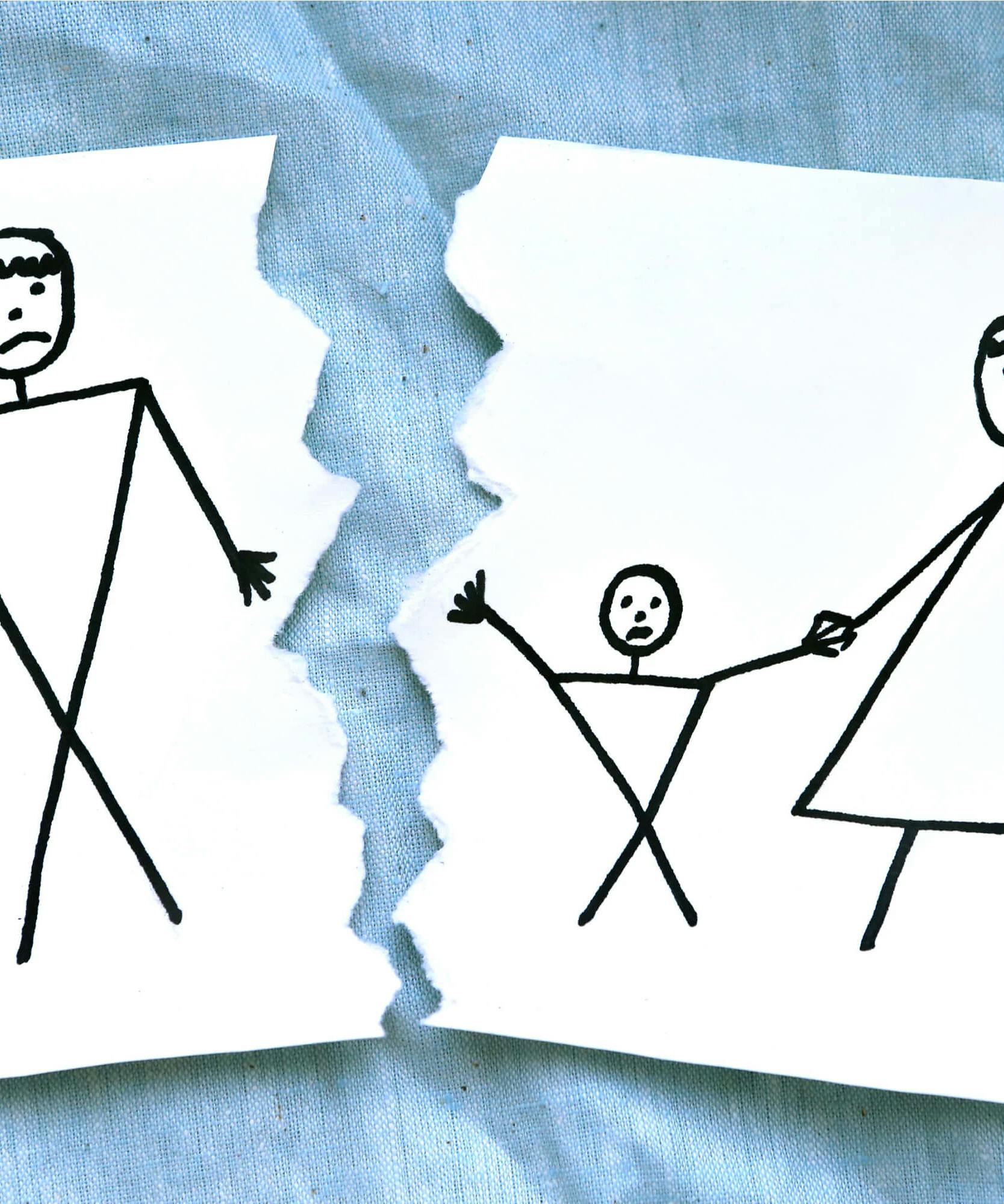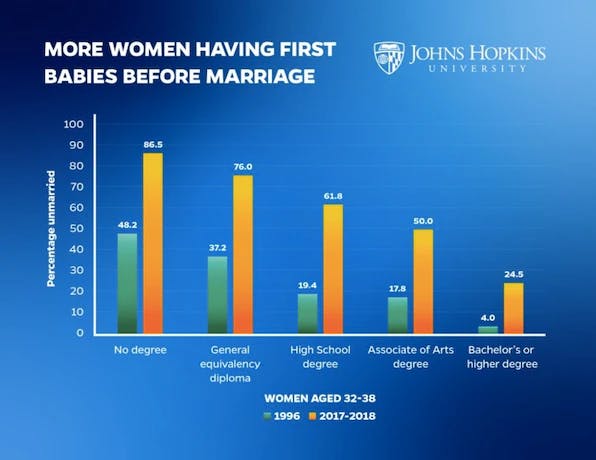An Increasing Number Of College-Educated Women Are Having Children Outside Marriage
Family formation in the U.S. used to follow a simple, common-sense pattern: courtship, marriage, children. In the past few decades, this pattern has been thrown off in most demographic groups – except for college-educated adults. Now, however, the pattern is shifting there as well.

For many years now, both the likelihood of cohabitation and the age at which they marry has increased for college-educated women. The numbers of those who had their first children outside of marriage, however, remained modest. But today, the trend is shifting upwards on that statistic. The percentage of college-educated women with a nonmarital first birth is increasing, proving a further disregard for – if not total rejection of – marriage as a foundational feature of family life.
Between 1996 and 2018, the number of women giving birth to their first child outside of marriage has risen across all educational groups. Let’s look at the 2018 numbers: For those without high school diplomas, 86.5% of women have their first child out of wedlock. Half of those with associate of arts degrees have their first child out of wedlock. And the percentage of women with at least a bachelor’s degree who put childbearing before marriage has risen from 4% in 1996 to 24.5% in 2018. This is the largest proportional increase among the groups.

Image Credit: Institute for Family Studies
Thus, the new pattern of family formation that’s emerging in the U.S. is as follows: cohabitation, children, and then maybe marriage. Essentially, things have been turned upside down – and the results will likely be (and are truly already proving to be) harmful.
The Trouble for Children (and Families)
In the United States today, 1 in 4 parents living with a child are not married as cohabitation and children before marriage are, across the board, becoming more common. Though this new pattern of family formation is now extremely prevalent, it doesn’t mean that it’s good or healthy.
Cohabiting parent families are less stable than marital union families. Only 33% of children born to unmarried parents remain in an intact family through age 12 compared to 75% of children born to married parents. The lives of the former group are also more tumultuous as they experience roughly three times as many family transitions, such as dissolution of cohabiting unions.
Only 33% of children born to unmarried parents remain in an intact family through age 12.
The economic situations of those born to cohabiting parents are also typically worse than those born to married parents, as a far greater percentage of cohabiting couples live at or below the poverty line. The mean income of married parents is about 50% higher than that of cohabiting couples. Married parents are also more likely to own a house and to provide health insurance for their children. Children who are born into poverty are less likely to complete high school. As the earlier statistics show, women who don’t complete high school have an extremely high chance of having their first child out of wedlock. Thus, the cycle perpetuates itself.
Here’s another thing to consider: 25% of births to married mothers are unintended, while half of births to cohabiting mothers are unintended. Those couples who find themselves in situations of unintended parenthood are far more likely to separate, causing even more instability for the child.
The mean income of married parents is about 50% higher than that of cohabiting couples.
Studies have also shown that children of married parents have stronger relationships with their parents, are less likely to experience abuse of any kind, are healthier and less likely to engage in delinquent behavior, and have greater educational and career achievement.
Closing Thoughts
Marriage shouldn't be a "maybe" when it comes to family life. We, and our children, deserve better than the instability and tragic consequences that have resulted from America's widespread abandonment of marriage.
We want to know what you think about Evie! Take the official Evie reader survey.